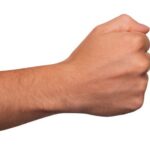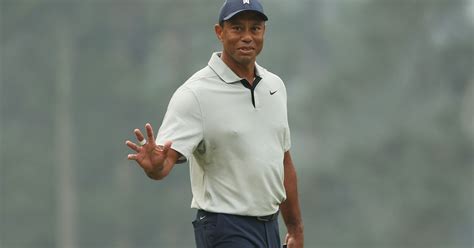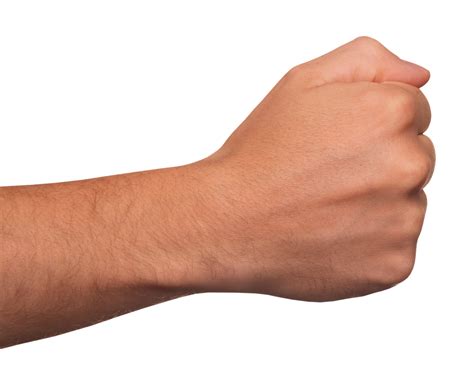
Jordan Spieth defied logic with a miraculous recovery shot from a precarious lie left of the 18th fairway at Pinehurst No. 2 during the U.S. Open’s opening round, a moment that stunned onlookers and highlighted a day of challenging conditions.
PINEHURST, N.C. – Jordan Spieth conjured a moment of pure golfing magic at the U.S. Open, executing an improbable recovery shot on the 18th hole that left spectators and fellow competitors in awe. The three-time major champion, enduring a difficult opening round at Pinehurst No. 2, found himself in deep trouble after his tee shot on the par-4 landed far left of the fairway, nestling amidst a collection of sandy waste areas, native grasses, and wire grass that define the course’s treacherous landscape. What followed was a shot that will undoubtedly be replayed for years to come, a testament to Spieth’s creativity, skill, and sheer audacity.
Spieth, standing 238 yards from the pin, faced an almost impossible situation. The ball was sitting down in thick vegetation, with an obstructed view of the green. Most players would have opted for a safe sideways chip back into the fairway, content to salvage a bogey. However, Spieth, never one to shy away from a challenge, saw an opportunity, albeit a risky one.
“I was just trying to get it somewhere… up there,” Spieth admitted after his round. “I wasn’t trying to be a hero.”
Despite his words, the shot was nothing short of heroic. Spieth, employing a long iron, somehow managed to extricate the ball from its difficult lie, sending it soaring through the air. The ball cleared the treacherous terrain, drawing slightly from left to right, before landing softly on the green, just a few feet from the hole. The crowd erupted in disbelief and admiration.
Spieth tapped in for a remarkable par, salvaging a 3-over-par 73 in a round where pars were hard-earned and bogeys came easily. The shot not only saved his scorecard but also provided a significant momentum boost heading into the second round.
“That was ridiculous,” said one onlooker, echoing the sentiments of many. “I can’t believe he pulled that off.”
Spieth’s recovery was a stark contrast to the struggles faced by many other players in the field. Pinehurst No. 2, with its undulating greens, unforgiving runoff areas, and strategic bunkering, proved to be a stern test for even the world’s best golfers. The course, meticulously restored to its original Donald Ross design, demands precision, patience, and a healthy dose of luck.
“It’s brutal out there,” Spieth conceded. “You have to be so precise. One small mistake and you’re paying the price.”
The U.S. Open is known for its demanding conditions and dramatic moments, and Spieth’s shot undoubtedly ranks among the most memorable in recent years. It was a moment of brilliance that showcased his exceptional talent and unwavering determination, a reminder of why he is considered one of the game’s most captivating players. While the U.S. Open is far from over, Spieth’s escape on the 18th will be etched in the tournament’s lore, a symbol of resilience and the unpredictable nature of golf.
The opening round saw Patrick Cantlay emerge as the early leader, carding a 5-under-par 65. Rory McIlroy also had a good start with a 66. Tiger Woods, making a rare appearance, struggled to a 74.
Spieth’s round, punctuated by that incredible shot, highlighted the contrasting fortunes of the players as they navigated the complexities of Pinehurst No. 2. He will now look to build on the momentum from his closing par and climb the leaderboard in the remaining rounds.
Deeper Dive into Spieth’s Shot and Its Context:
Spieth’s recovery shot wasn’t just a stroke of luck; it was a product of his exceptional hand-eye coordination, creative shot-making abilities, and years of experience playing under pressure. Unlike many modern golfers who rely heavily on technical precision and data analysis, Spieth possesses a more instinctive and imaginative approach to the game. He sees shots that others don’t, and he’s willing to take risks that others might shy away from.
“Jordan has always been a feel player,” said his longtime coach, Cameron McCormick, in a previous interview. “He relies on his instincts and his ability to visualize shots. He’s not afraid to try something unconventional if he thinks it’s the best way to get the ball in the hole.”
That unconventional approach was on full display at the 18th hole. Faced with a seemingly impossible lie, Spieth didn’t panic. He assessed the situation, considered his options, and then executed a shot that defied expectations.
The difficulty of the shot cannot be overstated. The ball was nestled deep in the wire grass, making clean contact extremely difficult. The lie also presented a significant risk of injury, as a mishit could easily result in a twisted wrist or a strained back. Furthermore, the presence of trees and bunkers further complicated the shot.
Spieth’s club selection was also crucial. He opted for a long iron, which allowed him to generate enough power to carry the ball over the hazards while still maintaining sufficient control to shape the shot. His swing was smooth and controlled, with a slight draw that helped the ball navigate the wind and land softly on the green.
The roar of the crowd after the shot was a testament to its brilliance. Spectators, accustomed to seeing even the best players struggle in such situations, were stunned by Spieth’s audacity and execution. The shot was immediately hailed as one of the best of the tournament and a potential highlight of the entire year.
The Challenge of Pinehurst No. 2:
Pinehurst No. 2 is renowned for its unique and challenging design. The course, originally designed by Donald Ross in 1907 and recently restored to its original character by Bill Coore and Ben Crenshaw, features undulating greens, strategically placed bunkers, and vast expanses of native grasses and wire grass. The course demands precision, strategy, and exceptional short game skills.
The greens at Pinehurst No. 2 are particularly difficult to navigate. They are crowned, meaning that the ball tends to roll away from the center, and they are often firm and fast, making it difficult to control the speed and direction of putts. The runoff areas surrounding the greens further complicate matters, as mishit approaches can easily roll into difficult lies, requiring delicate chip shots or tricky bunker play.
The native grasses and wire grass that line the fairways also pose a significant challenge. These areas are thick and dense, making it difficult to find the ball and even more difficult to hit a clean shot. Players who stray from the fairway often find themselves facing difficult lies and obstructed views, forcing them to play defensively and try to salvage par.
The bunkers at Pinehurst No. 2 are also strategically placed to punish errant shots. They are deep and often feature steep faces, making it difficult to escape and requiring precise bunker play. The sand is also coarse and uneven, adding to the challenge.
The U.S. Open is traditionally played on the most challenging courses in the world, and Pinehurst No. 2 is no exception. The course demands the utmost respect and requires players to be at their best in every aspect of the game.
Historical Significance of U.S. Opens at Pinehurst:
Pinehurst No. 2 has hosted the U.S. Open on four previous occasions: 1999, 2005, 2014 and now 2024. Each of these championships has produced memorable moments and dramatic finishes.
In 1999, Payne Stewart won his second U.S. Open title, defeating Phil Mickelson by one stroke. Stewart’s victory was particularly poignant, as he tragically died in a plane crash just a few months later.
In 2005, Michael Campbell emerged as the surprise winner, holding off Tiger Woods to claim his first and only major championship. Campbell’s victory was a testament to his resilience and determination, as he had overcome numerous obstacles throughout his career.
In 2014, Martin Kaymer dominated the field, winning by eight strokes. Kaymer’s victory was a wire-to-wire performance, as he led the tournament from start to finish.
Each of these U.S. Opens has added to the legacy of Pinehurst No. 2 as one of the most iconic and challenging golf courses in the world. The course has tested the skills of the game’s greatest players and has produced countless memorable moments.
Impact on Spieth’s Season and Career:
Spieth’s performance at the U.S. Open comes at a crucial time in his career. After a period of struggles, he has shown signs of regaining his form in recent months. A strong showing at Pinehurst No. 2 could provide a significant boost to his confidence and propel him back into contention for major championships.
Spieth burst onto the scene as a young prodigy, winning the Masters and the U.S. Open in 2015 at the age of 21. He quickly established himself as one of the game’s brightest stars, known for his exceptional putting skills, creative shot-making abilities, and unwavering determination.
However, Spieth’s form dipped in the years following his breakthrough season. He struggled with his consistency and often found himself battling swing issues and mental challenges.
Despite these struggles, Spieth has remained a popular and respected figure in the golf world. His fans appreciate his passion for the game, his willingness to take risks, and his engaging personality.
A victory at the U.S. Open would not only be a significant achievement for Spieth but would also serve as a validation of his hard work and perseverance. It would prove that he is still capable of competing at the highest level and that he has the talent and determination to win major championships.
Whether or not Spieth ultimately triumphs at Pinehurst No. 2, his incredible recovery shot on the 18th hole will be remembered as a moment of brilliance and a testament to his exceptional talent. It was a shot that defied logic and showcased his unwavering determination, a reminder of why he is considered one of the game’s most captivating players.
The Mental Fortitude of a Champion:
Beyond the technical brilliance of Spieth’s shot lies the mental fortitude required to even attempt such a recovery. In the pressure cooker environment of a U.S. Open, with the weight of expectations and the unforgiving nature of Pinehurst No. 2 bearing down, many golfers would have opted for the safer, less glamorous play. To simply chip out onto the fairway, take their medicine, and minimize the damage.
Spieth, however, possesses a rare blend of audacity and self-belief. He’s not afraid to take risks, and he trusts his instincts implicitly. This unwavering confidence allows him to see opportunities where others see only obstacles.
“I think the mental side of the game is just as important as the physical side,” Spieth said in a previous interview. “You have to believe in yourself and your abilities, even when things aren’t going your way.”
That belief was evident in his decision to go for the green on the 18th hole. He knew the odds were stacked against him, but he also knew that he had the skill and the creativity to pull off the shot.
The ability to remain calm and focused under pressure is a hallmark of all great champions. Spieth has demonstrated this ability throughout his career, and his recovery shot at the U.S. Open was just another example of his mental toughness.
The Role of Luck in Golf:
While skill and strategy are undoubtedly crucial to success in golf, luck also plays a significant role. A favorable bounce, a lucky roll, or a gust of wind can all make the difference between a good shot and a bad one.
Spieth’s recovery shot on the 18th hole certainly involved an element of luck. The ball could have easily hit a tree, rolled into a bunker, or landed in an even worse lie. But Spieth’s skill and decision-making increased his chances of a positive outcome.
However, as the saying goes, luck favors the prepared. Spieth’s years of practice and experience had honed his skills to the point where he was able to capitalize on the opportunity presented to him. He was able to execute a difficult shot under pressure, and the ball happened to land in a favorable spot.
The role of luck in golf is often debated, but there’s no denying that it can have a significant impact on the outcome of a tournament. The best players are able to minimize the influence of luck by making smart decisions, executing their shots with precision, and maintaining a positive attitude.
Looking Ahead: Spieth’s Chances at Pinehurst:
While Spieth’s opening-round 73 left him several shots behind the leaders, his remarkable recovery on the 18th hole provided a much-needed boost of momentum. He now faces the challenge of navigating the remaining rounds at Pinehurst No. 2 and climbing the leaderboard.
The key to Spieth’s success will be his ability to maintain his composure, make smart decisions, and execute his shots with precision. He will also need to rely on his exceptional short game skills to navigate the challenging greens and runoff areas.
If Spieth can avoid big mistakes and capitalize on his scoring opportunities, he has the potential to contend for the championship. His experience in major championships and his unwavering determination will serve him well in the pressure-packed environment of the U.S. Open.
Whether or not Spieth ultimately wins the U.S. Open, his incredible recovery shot on the 18th hole will be remembered as one of the most memorable moments of the tournament. It was a shot that showcased his exceptional talent, his unwavering determination, and his ability to thrive under pressure.
The Broader Impact on Golf:
Spieth’s shot resonated far beyond the confines of Pinehurst No. 2. It served as a reminder of the artistry and excitement that golf can offer, capturing the imagination of fans and inspiring aspiring players around the world.
In an era dominated by power and precision, Spieth’s creative and instinctive approach to the game is a refreshing contrast. He demonstrates that there is more than one way to succeed in golf and that imagination and risk-taking can be just as valuable as technical perfection.
His shot also highlighted the importance of perseverance and resilience. After a period of struggles, Spieth has shown signs of regaining his form, and his performance at the U.S. Open is a testament to his unwavering commitment to the game.
Frequently Asked Questions (FAQ):
1. What was so remarkable about Jordan Spieth’s shot on the 18th hole?
Spieth’s shot was remarkable because he recovered from a very difficult lie in the native grasses left of the 18th fairway, 238 yards from the pin. He managed to hit a long iron shot that landed softly on the green, a few feet from the hole, saving par. Most players would have simply chipped out into the fairway.
2. Where did this incredible shot occur?
The shot took place on the 18th hole of Pinehurst No. 2 during the first round of the U.S. Open.
3. How did Spieth describe his mindset before taking the shot?
Spieth said he “was just trying to get it somewhere… up there,” indicating he wasn’t necessarily trying to make a heroic shot but rather advance the ball towards the green.
4. What were the playing conditions like at Pinehurst No. 2 during the U.S. Open?
The conditions were described as “brutal” with challenging undulating greens, unforgiving runoff areas, and strategic bunkering, making precision and patience crucial.
5. Who was leading the U.S. Open after the first round?
Patrick Cantlay was the leader after the first round, with a score of 5-under-par 65.
6. What type of club did Spieth use for the shot?
Spieth used a long iron to execute the recovery shot, allowing him to generate enough power while maintaining control.
7. What is Pinehurst No. 2 known for?
Pinehurst No. 2 is known for its unique and challenging design, featuring undulating greens, strategically placed bunkers, and vast expanses of native grasses and wire grass, demanding precision, strategy, and exceptional short game skills.
8. How many times has Pinehurst No. 2 hosted the U.S. Open?
Pinehurst No. 2 has hosted the U.S. Open four times prior to 2024: in 1999, 2005, and 2014.
9. Has Jordan Spieth won the U.S. Open before?
Yes, Jordan Spieth won the U.S. Open in 2015.
10. How might this shot impact Spieth’s performance in the rest of the tournament?
The shot could provide a significant boost to his confidence and propel him back into contention for the championship, serving as a momentum builder after a difficult start to the round.
11. What were some other notable scores from the first round?
Rory McIlroy had a good start with a 66, while Tiger Woods struggled, shooting a 74.
12. What makes the greens at Pinehurst No. 2 so challenging?
The greens are crowned, causing the ball to roll away from the center, and they are firm and fast, making it difficult to control speed and direction when putting.
13. What is the significance of the wire grass and native grasses on the course?
These areas are thick and dense, making it difficult to find the ball and hit a clean shot, often forcing players to play defensively and try to salvage par.
14. What is the restoration of Pinehurst No. 2 meant to emphasize?
The restoration, led by Bill Coore and Ben Crenshaw, aimed to restore the course to its original Donald Ross design, emphasizing strategy and precision.
15. How does Spieth’s playing style differ from many modern golfers?
Unlike many modern golfers who rely on technical precision and data analysis, Spieth possesses a more instinctive and imaginative approach to the game, seeing shots that others don’t.
16. What did Jordan Spieth’s coach, Cameron McCormick, say about his playing style?
McCormick stated that Spieth has always been a feel player, relying on his instincts and ability to visualize shots, and is not afraid to try something unconventional.
17. What are some of the risks associated with attempting a shot like the one Spieth made?
The risks included a mishit leading to injury, such as a twisted wrist or strained back, and the presence of trees and bunkers complicating the shot.
18. What mental qualities are necessary to attempt a shot like this in the U.S. Open?
The mental qualities include audacity, self-belief, unwavering confidence, and the ability to remain calm and focused under pressure.
19. What role does luck play in golf, especially in a tournament like the U.S. Open?
Luck plays a role in golf, with favorable bounces, rolls, or gusts of wind potentially making a difference, but skill and decision-making can minimize the influence of luck.
20. What might be the long-term impact of this shot on Spieth’s career?
A strong showing at Pinehurst No. 2 could boost his confidence, propel him back into major championship contention, and serve as validation of his hard work and perseverance.









